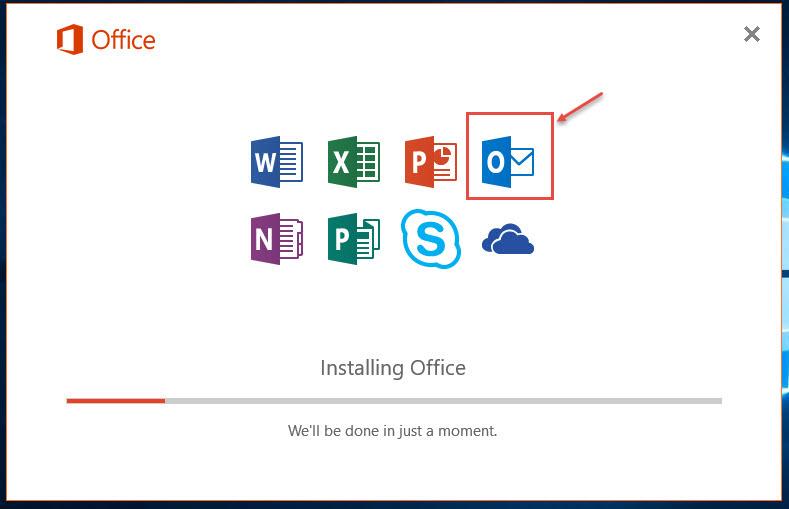Apr 30, 2013 To get the onmicrosoft email address of the recipient, use the following options: Login to Office 365 portal. Choose the menu: users and group. Choose the specific user that we need to configure the Outlook profile for him. Choose the more menu and the option: Edit Exchange properties. To set up your email address on your Mac (Apple) computer using Outlook 2016, you'll need your Office 365 email address, password and Outlook 2016 (or newer). Launch Outlook. (Don't have the app? Download it at the Microsoft site.) click Outlook then click Preferences. Click Accounts. Click + (plus) and then click New account.
If you need to update your email account settings or set up your email account in Outlook manually, use the following steps.
Update your email settings in Outlook for Windows
Sometimes you need to make a change to your email account settings. If you have a new password, if your email provider has asked you to change settings, or if you're having problems with sending and receiving email, you can change your email account settings in a few steps.
Open Outlook and select File.
Use the dropdown under Account Information to select the account you want to change.
Select Account Settings.
Select the type of information you want to change.
Account Settings allows you to add or remove accounts, change server settings, and more.
Account Name and Sync Settings lets you update the friendly name for the account and decide how many days' worth of email you'd like to synchronize.
Server Settings lets you change the login information, including the password, server name, port, and authentication settings.
Change Profile lets you switch to a new profile.
Manage Profiles lets you add or remove profiles or change profile settings.
The most common settings you'll change are Server Settings.
Select either Incoming mail or Outgoing mail to change a variety of server settings. This is also where you can update your email password (after you've changed the password with your email provider).
When you're done updating your settings, select Next > Done.
Use advanced setup to add a POP or IMAP email account in Outlook for Windows

If you need to enter specific values for incoming and outgoing server names, port numbers, or SSL settings, you can use Outlook's advanced setup option. You can use these instructions to add a POP or IMAP account to Outlook.
Open Outlook and select File > Add Account.
On the next screen, enter your email address, select Advanced options, then check the box for Let me set up my account manually and select Connect.
Select your account type. Most of the time when you need to use this option, you'll select IMAP.
The Account settings screen should be pre-populated with most of the account settings you need. However, if you need to look up your settings, see the POP and IMAP account settings topic. Enter your incoming and outgoing server settings and then select Next.
Enter your password and then select Connect.
Use advanced setup to add a third-party MAPI email account to Outlook for Windows
If you are using a third-party MAPI provider, download and configure the MAPI email provider application as suggested by provider company.
Open Outlook and select File > Add Account.
On the next screen, enter your email address, select Advanced options, check the box for Let me set up my account manually, and select Connect.
On the Advanced Setup screen, select Other.
On the Other screen, choose the type of server to connect to from the list.
Note: The Other option and your account type listed under it will only appear if you’ve properly installed and configured the MAPI provider.Click Connect.
The third-party MAPI provider application installed on your machine should launch.
Finalize the account setup by following the MAPI provider's instructions.
Quick Settings
Incoming Settings:
| Outgoing Server Settings:
|

The steps in this article describe how to set up your email account using Outlook 2016 or Outlook 2013 on your PC. You can add a variety of different email accounts to Outlook including Office 365, Gmail, Yahoo, and your work or school account.
To automatically set up an account
- Open Outlook, and when the Auto Account Wizard opens, choose Next.
Note: If the wizard didn't open or if you want to add an additional email account, on the toolbar choose the File tab. - On the E-mail Accounts page, choose Next > Add Account.
- On the Auto Account Setup page, enter your name, email address, and password, and then choose Next.
Note: If you receive an error message after choosing Next, double check your email address and password. If both are correct, choose Manual setup or additional server types. For instructions on this option, see the below. - Choose Finish.
Outlook 2016 Cannot Connect To Office 365
Office 365 Manual Setup Outlook 2016 Mac Free
To manually set up an account
- Choose Manual setup or additional server types > Next.
- Select the type of account you need, and choose Next.
- Fill-in the following information (server settings are at the top of this page):
Your Name, Email Address, Account Type, Incoming mail server, Outgoing mail server, User Name, and Password. - Choose Test Account Settings to verify the information you entered.
Note: If the test fails, choose More Settings. Your administrator might have you make additional changes, including entering specific ports for the incoming server (POP3) or outgoing server (SMTP). You can also try changing the outgoing authentication method from TLS to START or Auto. - Choose Next > Finish.